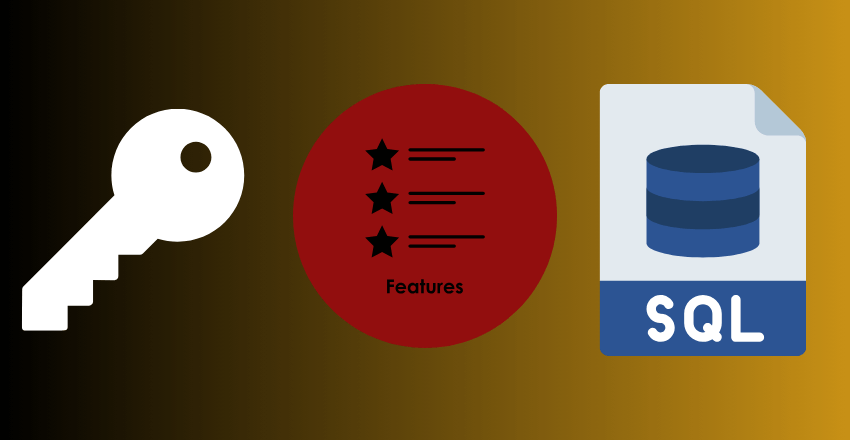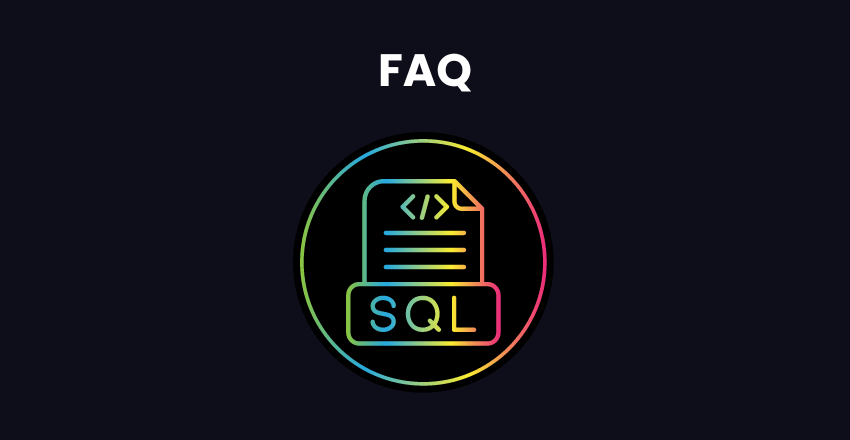
SQL Reporting Services (SSRS) enables customizable report generation from SQL Server data. Quickly build reports with charts, filters and formatting.
As businesses continue to collect large amounts of data, the need for data analysis and visualization has become more crucial than ever. SQL Reporting Services, a powerful reporting tool provided by Microsoft, enables businesses to access valuable insights from their raw data and make informed decisions.
SSRS is a user-friendly reporting tool that integrates seamlessly with other Microsoft tools and enables businesses to create rich, interactive reports that are both easy to read and impactful. With its powerful data visualization capabilities and easy-to-use interface, SSRS has become the go-to reporting tool for businesses of all sizes.
Key Takeaways
- SQL Reporting Services is a powerful reporting tool that enables businesses to access valuable insights from their raw data and make informed decisions
- SQL Reporting Services is a user-friendly reporting tool that integrates seamlessly with other Microsoft tools
- SQL Reporting Services has powerful data visualization capabilities that enable businesses to create rich, interactive reports that are both easy to read and impactful
Why Choose SQL Reporting Services for Data Analysis
SSRS is a powerful tool for businesses looking to gain valuable insights from their raw data. With its advanced reporting and data visualization capabilities, SQL Reporting Services allows users to create dynamic reports that showcase critical information in an easily digestible format.
One of the key advantages of using SQL Reporting Services for data analysis is its ability to handle large datasets. The tool can process and display complex data sets in a way that is easy to understand, allowing businesses to uncover insights that might be missed with other reporting tools.
SSRS provides a wide range of features that make data analysis a breeze. Whether you are looking to create custom reports, design interactive dashboards, or schedule reports for automated delivery, SQL Reporting Services has got you covered.
For example, a company might use SQL Reporting Services to create a dashboard tracking sales figures for each region of the country. This dashboard would display key metrics like total revenue, average order value, and customer retention rates, allowing executives to quickly identify areas of the business that are performing well and areas that need improvement.
In addition to its robust reporting features, SQL Reporting Services integrates seamlessly with other tools and platforms. For example, the tool can be integrated with Microsoft Power BI, allowing businesses to analyze data from a variety of sources in one central location.
Overall, SQL Reporting Services is an essential tool for any business looking to gain valuable insights from their data. With its advanced reporting and data visualization capabilities, businesses can make informed decisions based on accurate and up-to-date information.
Key Features of SQL Reporting Services

SQL Reporting Services is a powerful reporting tool that offers a range of features and functionalities to help businesses transform their raw data into actionable insights. Here are some of the key features that make SQL Reporting Services an indispensable tool for data analysis and visualization:
| Feature | Description |
|---|---|
| Report creation | SQL Reporting Services allows users to create customized reports with ease, using a drag-and-drop interface and powerful design tools. |
| Data visualization | SQL Reporting Services provides a variety of data visualization options, including charts, graphs, and maps, to help users better understand their data. |
| Report scheduling | SQL Reporting Services enables users to schedule reports to be generated and distributed automatically, saving time and increasing efficiency. |
| Security measures | SQL Reporting Services offers robust security features, including role-based access, data encryption, and SSL support, ensuring that sensitive data is protected. |
In addition to these core features, SQL Reporting Services offers a range of other capabilities, such as support for mobile devices, integration with other Microsoft tools like SharePoint and Power BI, and the ability to embed reports in other applications.
With its user-friendly interface and flexible design options, SQL Reporting Services is an excellent choice for businesses of all sizes looking to gain valuable insights from their data.
How to Get Started with SQL Reporting Services
Getting started with SQL Reporting Services is quick and easy, even for those who are new to the tool. Follow these simple steps to begin:
- Step 1: Install and Configure
Download and install SQL Server Data Tools from Microsoft’s website. Once installed, you can access SQL Reporting Services through the Visual Studio interface. Configure your server and database connections to get started.
- Step 2: Connect to Data Sources
Connect to your data sources, including SQL Server databases, Oracle databases, and other data sources through the ODBC connection. You can also use multi-dimensional data sources like OLAP cubes for advanced data analysis.
- Step 3: Create Reports
The Report Wizard walks you through creating basic reports. Use SQL queries to create more advanced reports and customize the layout of your report to fit your needs. You can also add tables, charts, and graphs to visualize your data in a meaningful way.
- Step 4: Publish and Share Reports
Publish your reports to the web, email them to stakeholders, or distribute them through SharePoint or other collaboration tools. You can also schedule reports to run automatically and have them delivered to specific users via email.
Here’s an example of an SQL query that retrieves customer data and displays it in a table:
SELECT * FROM Customers
Customer ID First Name Last Name Address City State Zip Code 1 John Smith 123 Main St Anytown CA 90210 2 Jane Doe 456 Oak Ln Smallville IL 12345
With these simple steps, you can start using SQL Reporting Services to gain valuable insights into your business’s data and improve your decision-making processes.
Integrating SQL Reporting Services with Other Tools
SQL Reporting Services provides seamless integration with other reporting and analytics tools, allowing businesses to leverage their existing technology investments and enhance their reporting capabilities. Integration with other tools can help streamline processes, save time, and improve decision-making. Here are some integration possibilities:
Microsoft Power BI
SQL Reporting Services can be integrated with Microsoft Power BI, a cloud-based business analytics service that provides interactive visualizations and business intelligence capabilities. Power BI allows users to create custom visuals, perform ad-hoc analysis, and share insights with stakeholders. With the integration of SQL Reporting Services, users can access and add SSRS reports to their Power BI dashboards, providing more context and detail to their data visualizations.
SharePoint
SQL Reporting Services can also be integrated with SharePoint, a collaborative platform that allows users to store, organize, and share information across teams. The integration allows users to view SSRS reports directly within SharePoint, providing easy access to vital business insights to relevant stakeholders. The integration also allows for centralized management of reports and facilitates collaboration between business teams.
Excel
SQL Reporting Services integration with Excel allows users to export SSRS reports to Excel and perform further analysis and visualization on the data. This integration allows users to create custom pivot tables, charts, and graphs based on the data from their SSRS reports, providing an alternative way to present insights and add value to the data.
SQL Code Example
SELECT TOP 10 * FROM Sales INNER JOIN Customers ON Sales.CustomerID = Customers.CustomerID WHERE Sales.Date BETWEEN '2022-01-01' AND '2022-12-31'
With HireSQL’s dedicated SQL developers, businesses can take advantage of the full potential of SQL Reporting Services and its integration capabilities. By outsourcing SQL development and support to HireSQL, businesses can tap into the expertise and experience of our team, who are proficient in English and familiar with the latest trends and best practices in the industry. This cost-effective approach allows businesses to focus on their core competencies while leaving the SQL development and support to the experts.
Top Reporting Tools for SQL Reporting Services

SSRS is a powerful tool for generating reports, but when used in conjunction with other reporting tools, it becomes even more effective. Here are some of the top reporting tools that can be used in conjunction with SQL Reporting Services:
Crystal Reports
Crystal Reports is a reporting tool that allows you to design, explore, visualize, and deliver reports from virtually any data source. It offers a wide range of features, including dynamic and interactive report creation, data visualization, and report scheduling.
Tableau
Tableau offers a suite of data visualization and business intelligence tools that allow you to create interactive dashboards and reports. It is known for its user-friendly interface and robust data discovery capabilities.
SSRS Power BI Report Builder
Report Builder is a tool used to create paginated reports for SSRS. It provides a graphical interface for designing reports and supports a range of data sources, including SQL Server, Oracle, and MySQL.
Other reporting tools that can be integrated with SQL Reporting Services include Power BI, Excel, and SharePoint. Each of these tools offers unique features and benefits, making them ideal for specific reporting needs.
Advantages of Hiring Dedicated SQL Developers from HireSQL

If you’re looking for a cost-effective way to enhance your SQL development and support, HireSQL is the perfect solution. Our team of dedicated SQL developers speaks fluent English and has extensive experience in building and maintaining SQL databases. Here are some of the advantages of hiring dedicated SQL developers from HireSQL:
| Benefits of Hiring HireSQL |
|---|
| Expertise and Experience |
| Our team of dedicated SQL developers is highly skilled and experienced in all aspects of SQL development, maintenance, and support. We have a proven track record of delivering high-quality solutions to our clients. |
| English Proficiency |
| All of our dedicated SQL developers speak fluent English, ensuring clear and effective communication throughout the development process. This eliminates language barriers and ensures that your project is completed on time and within budget. |
| Cost-effectiveness |
| Hiring dedicated SQL developers from HireSQL is a cost-effective solution for your SQL development needs. You’ll save on overhead costs such as office space, equipment, and employee benefits. In addition, you’ll have access to our team of experts without having to invest time and resources in training. |
Outsourcing your SQL development and support to HireSQL allows you to focus on your core business activities, while we take care of the technical details. Contact us today to learn more about how we can help you achieve your SQL development goals.
Best Practices for Effective Reporting with SQL Reporting Services

Creating impactful reports with SSRS requires following certain best practices to ensure that the reports are effective and provide valuable insights to stakeholders.
1. Organizing Your Data
Before designing a report, it’s important to organize your data in a way that makes sense for the particular business need. This could mean creating views or stored procedures in SQL Server that simplify complex queries, or creating a data model that ensures consistent and accurate reporting. By organizing your data effectively, you can reduce redundancy and errors, and make it easier to create meaningful visualizations.
2. Choosing the Right Visualization Techniques
Effective visualization can greatly enhance the impact of your reports. SSRS provides a wide range of visualization options such as charts, graphs, and gauges, as well as custom visualizations that can be created using HTML, SVG, or JavaScript. It’s important to choose the right visualization technique for your data, based on the type of information you want to communicate and the intended audience. For example, a pie chart might work well for comparing percentages, while a line chart could be more effective for showing trends over time.
3. Designing an Effective Report Layout
The layout of your report can also have a significant impact on its effectiveness. A well-designed layout should be intuitive, easy to read, and make efficient use of space. Consider grouping related data together, using white space to create visual separation, and adding appropriate labels and titles. If necessary, use a grid or table format to display tabular data in a clear and concise way. Remember to keep your audience in mind when designing the layout – for example, if the report will be printed, you will want to make sure it fits on a standard page size.
4. Optimizing Report Performance
When working with large datasets, report performance can become an issue. SQL Reporting Services provides several tools and techniques for optimizing performance, such as cached data, parameterized queries, and data compression. By using these tools, you can ensure that your reports are generated quickly and efficiently, even with large datasets.
5. Delivering Reports to Stakeholders
Finally, it’s important to consider how your reports will be delivered to stakeholders. SSRS allows reports to be delivered in a variety of formats such as PDF, Excel, and HTML, as well as through email, web services, and SharePoint. Choose the delivery method that best suits your audience, and make sure that the report is easily accessible and understandable. By delivering reports effectively, you can ensure that stakeholders have the information they need to make informed decisions.
By following these best practices, you can create effective reports with SQL Reporting Services that provide valuable insights and drive business growth.
Conclusion
SSRS is a powerful tool that businesses can leverage to gain valuable insights from their data. Specifically, by providing intuitive data visualization and reporting tools, SSRS enables businesses to make informed decisions. These decisions can, in turn, drive growth, efficiency, and profitability.
Whether you are an experienced data analyst or just getting started with data-driven decision-making, SSRS can help you unlock the full potential of your data. Essentially, by choosing to use SSRS, you are opting for a reliable and efficient reporting solution that can handle even the most complex reporting needs.
If you’re in the market for a dedicated team of SQL developers to help you with your reporting needs, HireSQL can provide you with the expertise and support you need. Our team of dedicated developers are experts in SSRS, and we pride ourselves on delivering quality support and service to our clients.
So don’t wait any longer to get started with SSRS. Contact HireSQL today and discover how we can help you take your reporting to the next level.
FAQ

Q: What is SQL Reporting Services?
A: SSRS is a powerful tool used for data analysis and visualization. It allows businesses to create and distribute reports that provide valuable insights from raw data.
Q: Why should I choose SQL Reporting Services for data analysis?
A: SSRS offers numerous advantages for data analysis. It helps businesses uncover meaningful insights, make informed decisions, and track key performance indicators. It also enables data visualization and provides real-time reporting capabilities.
Q: What are the key features of SQL Reporting Services?
A: SSRS offers various features including report creation, data visualization, report scheduling, and security measures. It has a user-friendly interface and provides flexibility in designing and customizing reports.
Q: How can I get started with SQL Reporting Services?
A: To get started with SSRS, you need to install and configure the tool, connect it to your data sources, and design reports using SQL queries. There are step-by-step guides available to help you through the process.
Q: What are the best practices for effective reporting with SQL Reporting Services?
A: Some best practices for effective reporting with SSRS include organizing data properly, utilizing effective visualization techniques, optimizing report layout and performance, and delivering reports to relevant stakeholders in a timely manner.
Q: Can SQL Reporting Services be integrated with other tools?
A: SSRS can be integrated with other tools and platforms. It has seamless integration capabilities with Microsoft Power BI, SharePoint, and Excel, allowing you to combine the power of SQL Reporting Services with other reporting and analytics tools.
Q: What are the top reporting tools for SQL Reporting Services?
A: Some of the top reporting tools that can be used in conjunction with SSRS are Crystal Reports, Tableau, and SSRS Power BI Report Builder. These tools offer additional features and benefits for enhanced reporting capabilities.
Q: What are the advantages of hiring dedicated SQL developers from HireSQL?
A: Hiring dedicated SQL Developers from HireSQL offers several advantages. The team has expertise and experience in SQL development, ensuring high-quality solutions. They are proficient in English, making communication smooth. Lastly, outsourcing SQL development and support can be cost-effective for businesses.
Sarah is an accomplished author, esteemed for her expertise in the field of data science and her engaging written works that cater specifically to the data industry. Residing in the vibrant city of London, she embarked on an academic journey at Cambridge University, where she immersed herself in the world of mathematics. This foundational education formed the bedrock of her illustrious career.
Driven by a desire to broaden her horizons, Sarah sought new challenges and opportunities, leading her to embrace a pivotal role at NetApp, a renowned data storage consultancy firm. In this capacity, she thrived in the dynamic landscape of data architecture, devising innovative strategies to optimize data storage, retrieval, and management for a diverse range of clients. Sarah’s intricate understanding of the intricacies of data systems and her ability to craft tailor-made solutions earned her accolades and solidified her reputation as a sought-after industry expert.
Beyond her professional pursuits, Sarah gracefully balances her roles as a devoted mother and an accomplished equestrian. She finds immeasurable joy in nurturing her daughter, guiding her through the intricacies of life, and instilling a love for knowledge and creativity. Sarah’s dedication to both her family and her career exemplifies her unwavering commitment to excellence in all facets of life.







